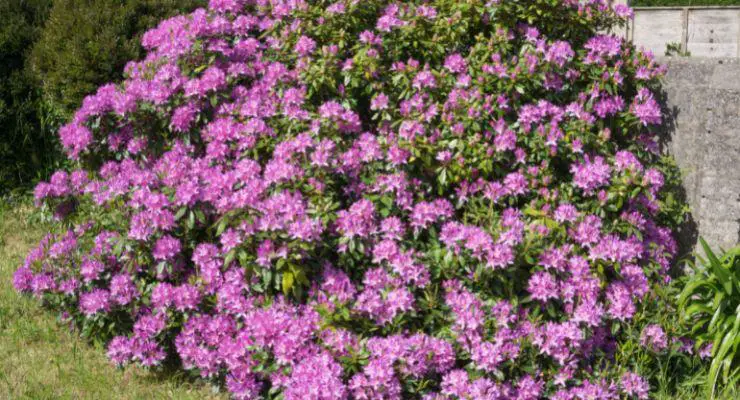If you’re looking for a splash of purple in your garden, purple flowering shrubs are an excellent choice. These vibrant and colorful plants can bring life to any outdoor space, adding beauty and charm to even the most mundane landscaping.
Homeowners across the United States have long enjoyed purple flowering bushes as part of their gardens and landscapes, with many varieties being well-suited to our climate. From low-maintenance evergreen bushes to delicate deciduous blooms, there is a purple flowering bush that will fit perfectly into any landscape design or gardening plan.
In this article, we will discuss some of the best purple flowering shrubs available in the United States so you can find one that fits both your aesthetic preferences and practical needs.
Bushes with purple flowers
Fragrant lilac (Syringa vulgaris)
Fragrant Lilac (Syringa vulgaris) is a deciduous, multi-stemmed shrub with an irregular, rounded outline. The Fragrant Lilac is a quickly-expanding shrub in its youthful stage; however, as it ages, the growth rate slows to approximately one foot per year.
Its stems are dark greyish-brown and strong while the flower clusters that bloom from April till May provide a picturesque contrast with their lush green foliage. Its wood is also durable despite its decreased speed of growth over time. The nostalgic fragrance of the flowers adds to the feeling of “coming of spring”.
The flowers of the Fragrant Lilac come in a variety of colors, including lilac, blue, mauve, lavender, white, or pink, and are highly fragrant. This makes it a popular choice for gardens, and the fragrant flowers are highly valued for their sweet scent. Common Lilac is also deer-resistant and easy to grow, making it a popular choice for northern and colder climates.
The care of Fragrant Lilac (Syringa vulgaris) needs abundant sunshine, optimally six or more hours of direct sunlight daily. Additionally, they flourish in fertile soil with plentiful humus and excellent drainage; the preferred pH is near 7.0 on the neutral to alkaline spectrum. Adequate drainage is an essential part of their care as well so ensure that you choose a planting area accordingly.
Whether in a tiny or expansive garden, the Fragrant Lilac is an ideal choice for adding beauty and aroma. It can stand alone as a stunning specimen tree or be planted in several to create lush hedges, screens, and pathways that will make your outdoor living area truly come alive with its sweet scent. With its captivating flowers and delightful fragrance, the Fragrant Lilac won’t fail to bring life into any space!
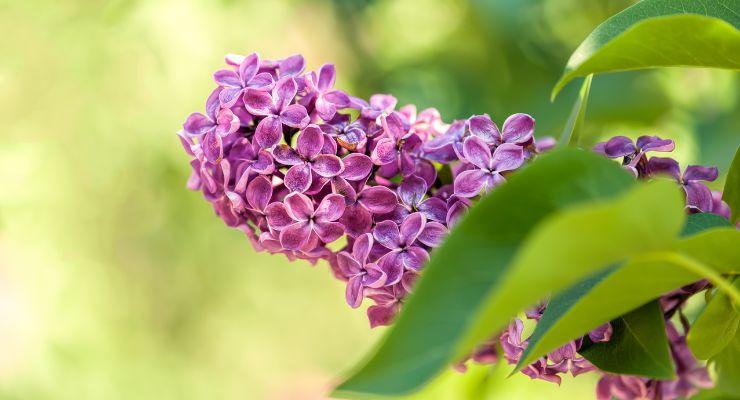
Rhododendron ‘Conlee’ Autumn Amethyst
Rhododendron ‘Conlee’ Autumn Amethyst is an evergreen azalea, with clusters of hot pink trumpet-shaped flowers with a hint of lavender. This flowering bush boasts clusters of hot pink trumpet-shaped flowers with a hint of lavender that will reach up to 4 feet in height and 5 feet in width, making it a perfect choice for borders and mass planting.
This azalea variant is known for its hardiness and resilience, it is cold-hardy, heat tolerant, and disease resistant, which means it can be planted just about anywhere. The ideal location would be in full or part sun or part shade, with acidic soil that is organically rich and humusy.
When it comes to care, this species is not demanding, give it plenty of water during its first year after planting and during dry spells. These purple flowering azaleas will thrive in USDA hardiness zones 5 to 8. As winter arrives you will enjoy the attractive purple foliage, whereas the blooms can be enjoyed from spring until fall.
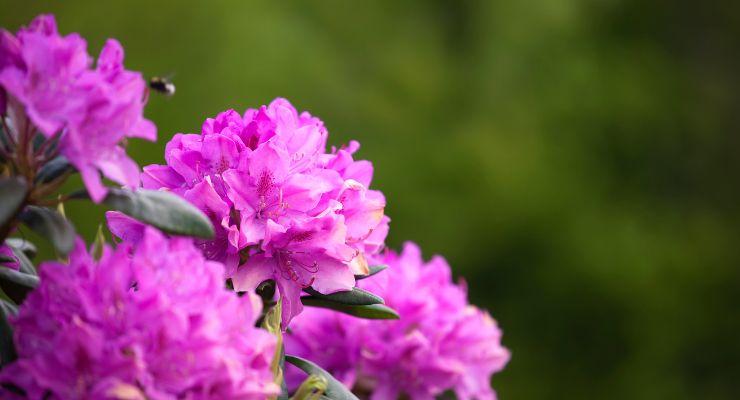
Butterfly Bush (Buddleia davidii)
The Buddleja davidii, or butterfly bush, is a deciduous shrub that is native to central China and Japan. Bursting with beauty, this bush is an eye-catching addition to any garden or outdoor space. It requires minimal effort when it comes to transplanting and produces abundant blooms ranging in hues from pristine white to a deep regal purple throughout the summer and autumn months – making it ideal even for suburban landscapes.
Not only is this bush a visual delight, but it’s also a valuable source of nectar for butterflies and bees. However, it has been classified as an invasive species in many U.S states due to its tendency to replace native plants that are vital for local ecosystems.
Caring for the butterfly bush is easy, it thrives in full sun exposure, regular watering, and well-drained soil. It grows comfortably in hardiness zones 5 through 8. Interestingly, it should not be over-fertilized since this may redirect energy toward leaf growth rather than flower production.
While butterfly bush is a beautiful addition to any garden, it’s important to be mindful of its invasive nature when planting it. If you’re located within the U.S., it’s best to consult with a local expert or your local nursery before adding it to your garden.
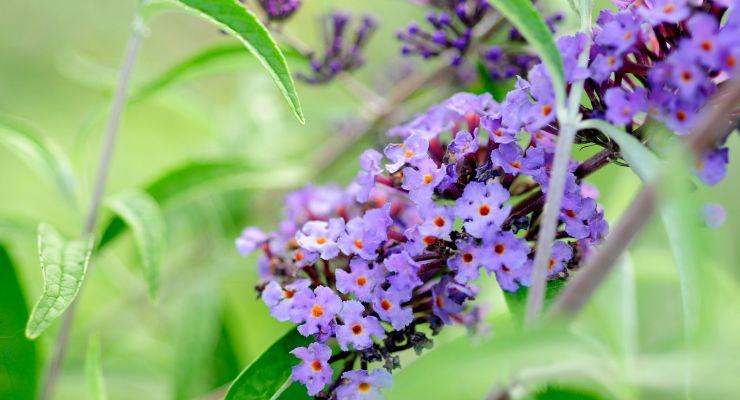
Clematis ‘Betty Corning’
Purple Flowering Shrubs are a wonderful addition to any garden, adding a beautiful backdrop of purple hues and a delightful fragrance. Clematis ‘Betty Corning’ is one of the most popular ones available. This medium-sized deciduous vine was first discovered growing in Albany, New York in 1932 and has been treasured ever since. It can quickly grow up to 5-6 ft. long and 2-4 ft. wide and blooms from July to September so you can enjoy its purple blooms for many months.
Clematis ‘Betty Corning’ can be trained to climb a wall, trellis, fence, arbor, porch, lamppost, or other stationary structure providing good architectural height and framework for small gardens. Pruning should be done in late winter or early spring with hard pruning to a pair of strong buds about 1ft above the ground.
This bush prefers regular watering in a cool root run and is more tolerant of severe cold and punishing heat than many other Clematis varieties making it ideal for colder climates. It has pink lilac flowers that look simply stunning against their deep green foliage backdrop.
If you’re looking for purple flowering shrubs that are easy to care for and have an extended bloom season then Clematis ‘Betty Corning’ could be the perfect choice for your garden! It’s hardy in zones 4-9 so make sure you check your local climate before planting this purple beauty!
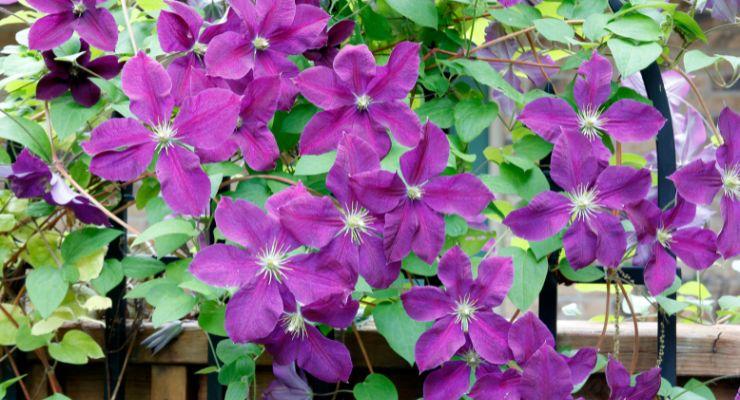
Persian Lilac (Syringa chinensis ‘Saugeana’)
The Persian Lilac is a purple flowering shrub that boasts an abundance of fragrant purple blooms, making it a popular choice for homeowners in the United States. It can grow anywhere from 4 to 8 feet tall and 5 to 10 feet wide, depending on how it is pruned.
Persian Lilacs are easy to care for and can tolerate full sun, as well as organically rich, moist soils with good drainage. They should be pruned regularly to promote branching and avoid more severe pruning later on.
The flowers also attract beneficial insects such as bees and butterflies, serving as a natural source of food and pollination for the local wildlife.
Homeowners will find continued enjoyment in their purple flowering shrubs throughout the seasons: during springtime, they will witness abundant purple flowers; during summer months they will appreciate its deep green foliage; in fall its foliage will change into shades of yellow, red, and purple; and in winter its unique form provides interesting texture and interest in the garden.
When properly cared for and planted correctly the Persian Lilac makes an easy-care flowering bush that adds color and texture to any garden year-round!
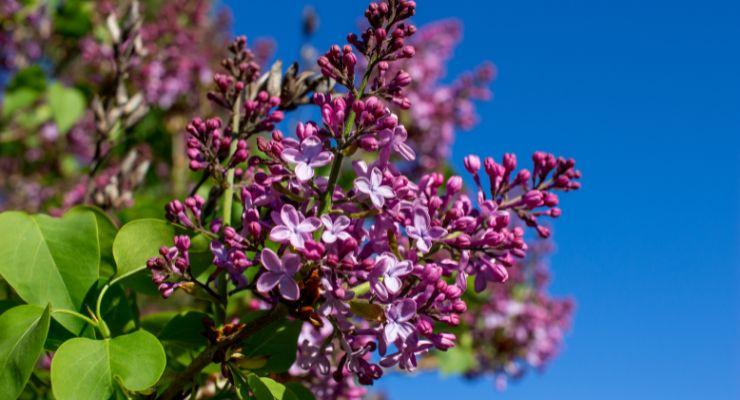
Yankee Doodle Lilac (Syringa vulgaris ‘Yankee Doodle’)
Yankee Doodle Lilac (Syringa vulgaris ‘Yankee Doodle’) is a deciduous purple flowering shrub that produces radiant panicles of deep purple flowers in mid-spring to summer. The flowers are 8 inches long, fragrant, and have the deepest purple color available.
The petals are shaped like hearts and contrast nicely against the dark green foliage. The buds are held tight over the winter and emerge from the unfurling foliage in spring. This shrub is an attractive addition to any home garden.
For optimal growth and health, Yankee Doodle Lilac prefers full sun or partial sun and should be watered when the top 2 inches of soil is dry. Plant a young Yankee Doodle lilac in a sunny location and moist, well-drained soil. Try not to over-water as it does not tolerate standing water for extended periods. Prune annually for shape and size control as well as air circulation which helps prevent disease.
This purple flowering shrub can reach 6 ft tall and wide at maturity making it an ideal choice for medium sized yards or larger gardens where its presence will be easily noticed. It can be planted as an accent piece on its own or combined with other plants to create stunning purple displays.
With proper planting, pruning, mulching, fertilizing, and watering techniques, you can enjoy this beautiful purple flowering bush for many years.
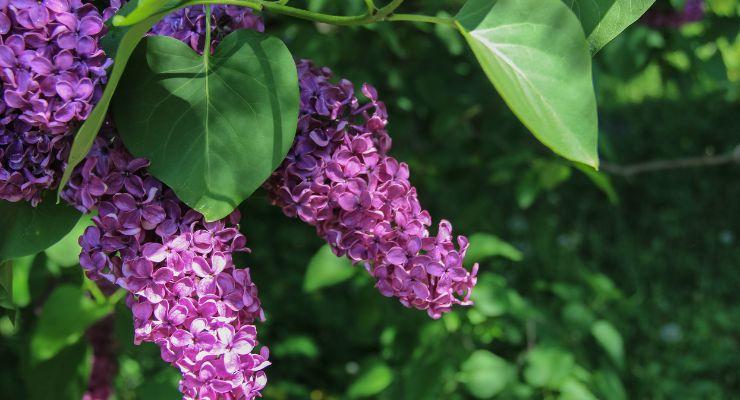
Golden Dewdrops (Duranta Erecta)
Duranta erecta, otherwise known as Golden Dewdrops, is a stunning purple flowering shrub that is native to Mexico, South America, and the Caribbean. This bush thrives in both tropical and subtropical climates and can be grown either as an annual or perennial depending on where it is planted.
It does best when planted in full sun to partial shade in well-draining soil with regular watering during its growing season. Duranta erecta grows rapidly and can reach heights of up to 10 feet tall, though some varieties will remain relatively short even when mature. The light purple flowers on this shrub are star-shaped and can provide vibrant purple hues for many months throughout the year once established.
The luscious, green foliage of Duranta erecta not only brings life to any garden but also provides a burst of vibrant color. Moreover, this shrub has impressive resilience towards varying soil types, such as sandy soils – making it the perfect choice for those with more challenging growing conditions.
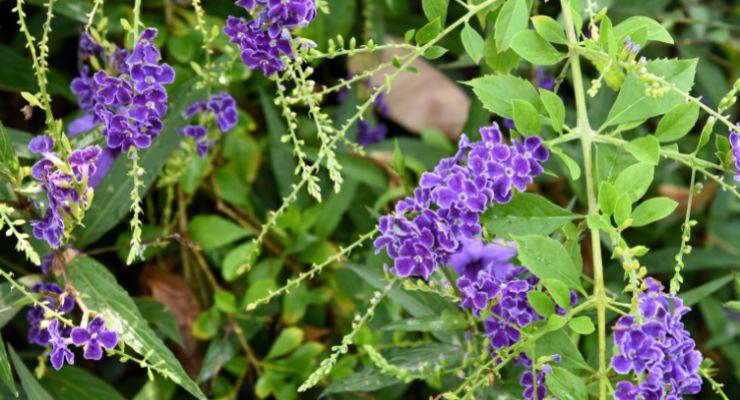
Hydrangea Macrophylla ‘Royal Purple’
The Hydrangea macrophylla ‘Royal Purple’ is a stunning shrub with its purple flowers that will add a touch of elegance and beauty to any garden. This deciduous shrub boasts large, rich purple mophead blooms that will delight the senses.
The ‘Royal Purple’ hydrangea is a small and graceful shrub, growing to just 3 feet in height with an even spread. Its lush foliage dies back each winter, leaving behind attractive fruit capsules from which its bounty of seeds can be released.
When planting purple hydrangea shrubs, it is best to do so during autumn or early spring in loamy soil that retains moisture well. To ensure optimal growth conditions, the shrub should receive morning sun and afternoon shade, as too much direct sunlight can cause the burning of its leaves. Furthermore, planting sites that are exposed or dry should be avoided for this type of purple flowering bush.
In terms of hardiness zones, the ‘Royal Purple’ hydrangea is suitable for USDA Zone 6 through 9, which provides suitable temperatures throughout the year without risk of frost damage or other extreme weather conditions. With proper care and maintenance, these stunning and all-around favorite purple flowering shrubs will bring cheerfulness and a touch of elegance to any garden.
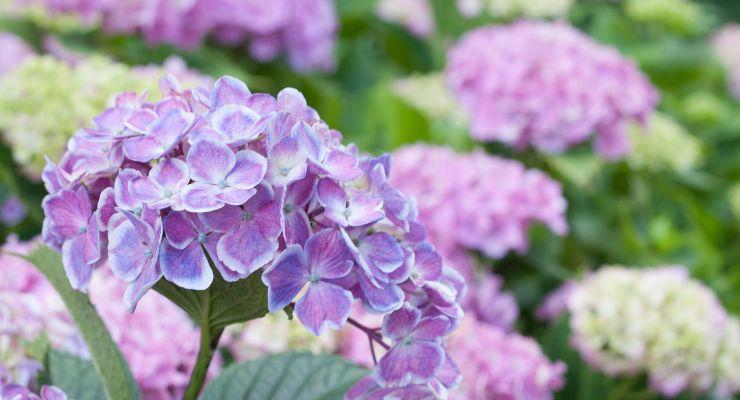
Weigela
Weigela is a beautiful and versatile deciduous shrub that belongs to the family Caprifoliaceae, native to eastern Asia. These flowering shrubs come in a variety of shapes and sizes, many with vibrant purple flowers. Planting Weigela in a spot with plenty of sun and moist yet well-draining soil is essential for optimal growth and blooms.
For best results, give your Weigela bush ample space for its roots to spread out as pruning can only do so much when it comes to size management. Although Weigela plants prefer moderately acidic soil, they are generally adaptable to a broad range of climates.
When it comes to caring for Weigela bushes, consistent watering during the initial establishment phase is key—watering may be necessary for arid seasons as well. Depending on the variety you pick out, mature Weigelas typically reach heights ranging from two to six feet tall, making them ideal for small hedges or landscape features.
If you live across North America’s hardiness zones 3–8, certain varieties may thrive more than others. If you’re unsure which types would be best suited for your climate zone, consider consulting a local gardening expert!
With adequate sunlight exposure and proper care and maintenance, Weigelas are sure to make a stunning addition to any garden. Their bold colors never fail to create spectacular displays that look great throughout the springtime and into early summer.
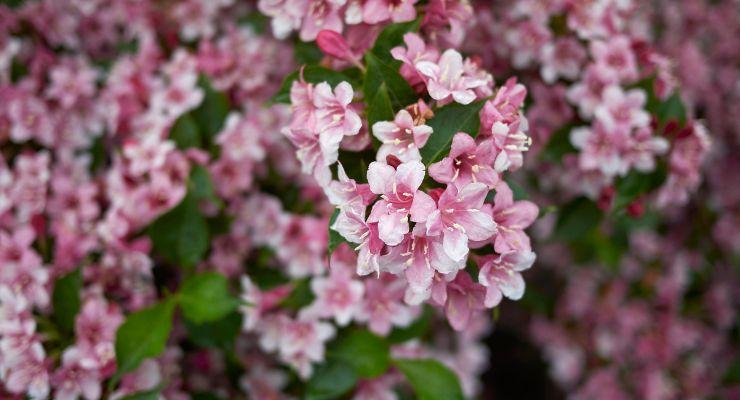
Purple Heather (Calluna vulgaris)
Calluna vulgaris, also known as purple heather or Scotch heather, is a small but mighty evergreen shrub that adds a pop of color to any garden. This hardy plant is native to Europe, Asia, and North America and is known for its small scale-leaves and delicate, bell-shaped flowers that range in color from light purple to white. These flowers bloom from July to September, making purple heather an ideal choice for a late-summer garden.
Purple heather is a versatile plant that can thrive in both full sun and partial shade, and it is not picky about soil type. As long as the soil is moist and well-drained, this plant will flourish.
However, it prefers cooler climates and may need extra watering during hot temperatures. For best results, purple heather should be planted in late summer or early autumn. It is hardy in zones 5-7, so it can be grown throughout most of the United States.
But it’s not just the flowers that make purple heather stand out. This bush also boasts beautiful bronze-purple foliage that adds an extra touch of color to the garden during the autumn season. Its tiny blooms also give off a delightful fragrance that fills the air each summer.
With its low maintenance needs and visual appeal, purple heather is an ideal choice for any gardener looking for a beautiful and easy-to-grow shrub.
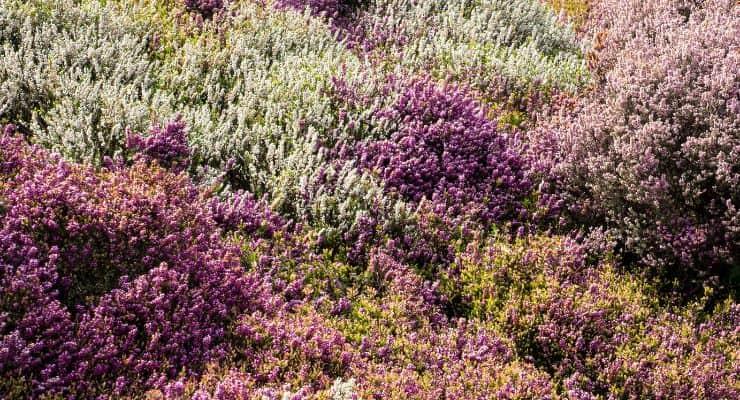
Lavender
Lavender (Lavandula) is a beloved genus of over 40 species of flowering plants that are native to the Old World. From the Canary Islands and Cape Verde to Europe, northern and eastern Africa, the Mediterranean, and southwest Asia to India, lavender has been cherished for its beauty and versatility for centuries.
The most commonly cultivated form of lavender is the English lavender (Lavandula angustifolia), known for its beautiful, fragrant purple flowers.
Growing lavender is a rewarding experience and requires a few key elements to ensure success. Firstly, it’s important to purchase healthy plants from a reputable nursery or garden center. Once planted into well-drained soil with full sun exposure, lavender will thrive and produce abundant blooms.
Regular deep watering, when the soil is almost dry, will encourage strong root development and drought tolerance. Pruning after flowering and fertilizing with a balanced fertilizer annually will also help to promote bountiful blooms every year.
Lavender is hardy in zones 5 through 11, making it suitable for cultivation in many parts of America. It prefers hot climates with plenty of sunshine throughout the summer months and mild winters.
With its delicate purple flowers and soothing aroma, lavender is a must-have for any garden. It’s a versatile plant that can be used in a variety of ways, from adding fragrance to your home to creating a relaxing garden retreat.
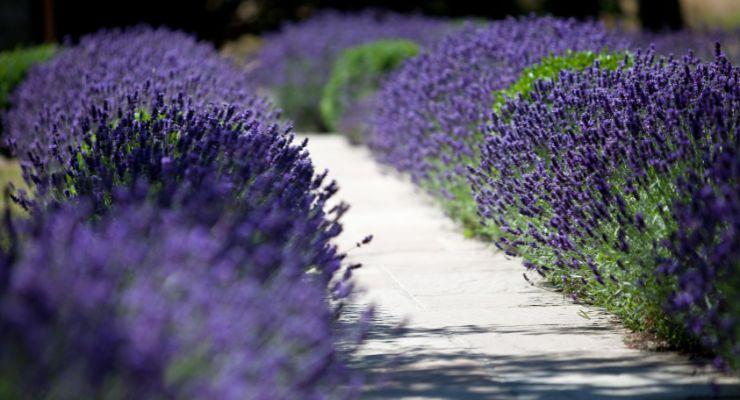
Purple Hebe (Hebe buxifolia)
Hebe buxifolia ‘Patty’s Purple’ is a stunning and versatile evergreen shrub that can be used as a hedge or as an accent in any garden. Its deep green leaves and striking wine-red stems create a visually striking display, particularly during the fall and winter months.
This purple bush is also a favorite of pollinators, with its lavender-purple flowers attracting bees and hummingbirds throughout the summertime. Not only is it easy on the eyes, but it’s also easy to care for – it requires minimal amounts of water, making it perfect for novice and experienced gardeners alike.
Hardy in warm zones 8-11, Hebe buxifolia thrives in the hot sun but is also tolerant of partial shade. To preserve its shape and size, it is recommended to prune this purple flower during late winter or early spring; however, regular maintenance for this plant is significantly lower than other plants.
Hebe is an exquisite, low-maintenance shrub that can instantly amp up your garden’s charm. These delicate purple flowers are incredibly durable and can survive in a variety of climates – making it the perfect gift for any gardener who wants to enjoy their blooms all year round!
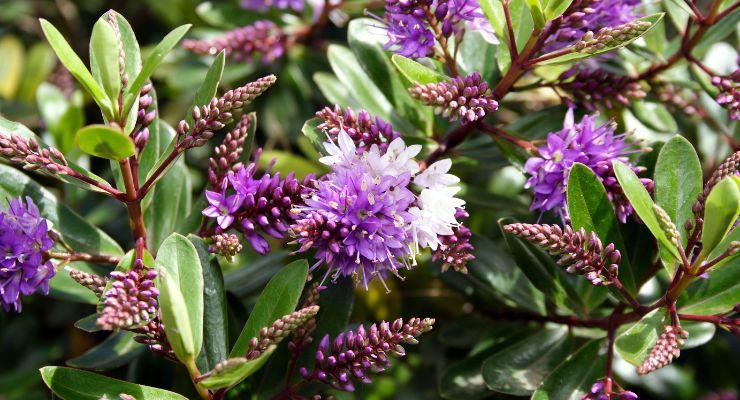
Leptodermis (Leptodermis oblonga) with Beautiful Purple Blooms
Leptodermis oblonga, also known as ‘Baby Lilac’, is a charming flowering bush that belongs to the Rubiaceae family. Native to Mongolia, China, and Northern Vietnam, this species of shrub thrives in sunny locations on hillsides, roadsides, and thickets. With a low mounding habit and glossy oval leaves, it grows up to 18 inches tall and is known for its beautiful tubular lilac-colored flowers that bloom throughout the growing season.
When planted in full sun or partial shade areas with moist soil, Leptodermis thrives and adds a splash of color to any outdoor space. It prefers hardiness zones 5 to 8 and is relatively hardy, but should not be fertilized at planting time or during the first growing season in the garden.
The variety Leptodermis oblonga ‘Summer Stars’ is a compact upright bush with red-flushed stems, and mid-green leaves for added interest.
Taking care of Leptodermis is essential to prevent its rampant underground root growth. However, it still makes for a beautiful and vibrant addition to your garden; from flower beds that burst with color to an elegant contrast when planted alone against walls. Experience the beauty of this purple bush by planting one today – you’ll be able to enjoy its blossoms from late spring through early fall!
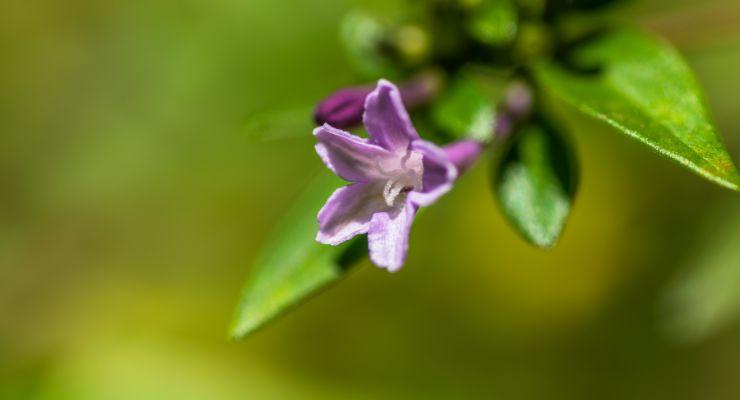
Purple Flowering Jane Magnolia (Magnolia liliiflora x Magnolia stellata)
Introduce the Jane Magnolia tree as a stunning hybrid deciduous shrub or small tree that’s sure to be a standout in any garden. This beauty is known for its large, showy reddish-purple flowers with white interiors that bloom in mid to late spring, after the first frost. The petals of these 8 inch wide cup-shaped flowers may also rebloom during summer months, making it a true treasure in your garden.
But what truly makes this purple bush extraordinary is its captivating creation story. The Jane Magnolia tree was created by crossing Magnolia liliflora ‘Reflorescens’ and Magnolia stellata ‘Waterlily’ in the 1950’s at the National Arboretum, making it a one of a kind addition to any garden.
This tree thrives in full sun to partial shade and prefers moist, rich soil that drains well. It grows 10-15 feet tall with a spread of 8-12 feet. When planting, it’s important to deeply water the tree two to three times per week for their first summer season, increasing frequency if it’s very hot. In other conditions, only water if surrounding soil is dry.
This resilient tree can withstand hardiness zones 4 to 8, making it the perfect choice for any area in North America.
Don’t hesitate to bring the magnificent Jane Magnolia into your garden! With a unique history and proper attention, you will be rewarded with an abundance of vibrant purple flowers every spring. This exquisite bush is not only beautiful but also sure to become a treasured addition in any landscape. Make this gorgeous creation part of your world today – let it dazzle your yard tomorrow!
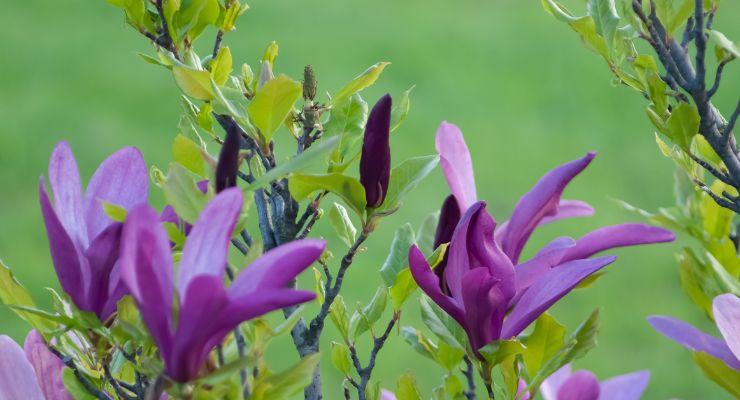
Hibiscus Syriacus (Rose Of Sharon)
The Rose of Sharon, also known as Hibiscus syriacus, is a stunning flowering plant that is sure to make a statement in any garden. This hardy purple bush is native to Korea and parts of China, but has been introduced to many other areas due to its versatility and resilience.
This remarkable plant can reach an astounding 7 to 13 feet in height, possessing large trumpet-shaped flowers that include white stamens with yellow pollen. The blooming season lasts from midsummer through fall, adding vivid color and vibrancy to any landscape it occupies.
One of the best things about the Rose of Sharon is its ability to thrive in a variety of climates, even cold ones. This makes it a popular choice among gardeners. There are several varieties available, including ‘Red Heart’ or ‘Aphrodite’, both bearing red showy flowers instead of the usual purple ones. For busy homeowners looking for a fuss-free gardening option, this is the perfect choice due to its low maintenance requirements.
To nurture this beautiful plant when young, it is essential to provide sufficient water regularly for the roots to grow strong and healthy. To maximize its growth and vitality, fertilizer should be applied during the spring and summer months.
The Rose of Sharon needs plenty of sunlight yet moist soil conditions and tolerates some droughts when mature, so check the hardiness zones of the area where you want to plant it before doing so.
All things considered, the Rose of Sharon is an ideal choice for gardeners seeking to add a burst of color and panache to their landscape. The plant’s strength permits it to withstand various types of weather conditions as well as its hollyhock-like petals provide vividness that will last throughout every season.
With minimal maintenance required and such captivating beauty, this addition would be a splendid finishing touch for your garden oasis!
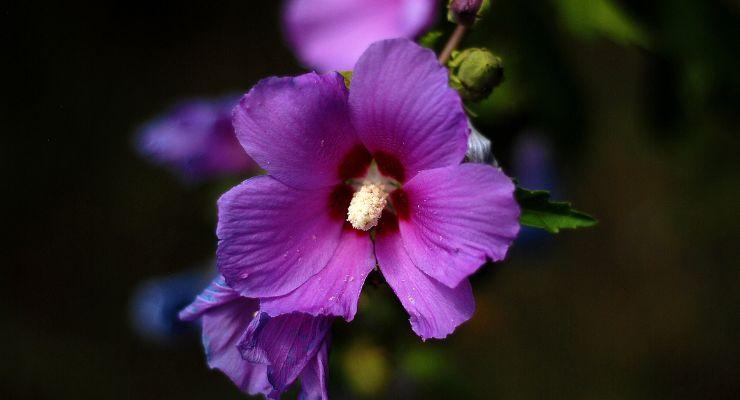
Spiraea Japonica (Spirea)
Spiraea japonica, also known as Japanese Spirea or Japanese Meadowsweet, is an attractive deciduous shrub with bright green, oval to lance-shaped leaves. It is native to Japan and was introduced into North America and Europe in the late 19th century as an ornamental landscape plant.
This hardy bush has low maintenance requirements and grows well in zones 4 – 8, tolerating both dry and moist soil conditions while preferring full sun for more vibrant colors. With a height of 4-6 feet and upright mounded form, this shrub beautifies any garden space it occupies.
A common concern for cultivators of Spiraea japonica is its potential to become invasive due to aggressive self-seeding tendencies. To address this issue, 20 commonly available varieties were evaluated for fertility through seed germination tests which identified 3 sterile cultivars: ‘Crispa’, ‘Dart’s Red’, and ‘Neon Flash’.
To guarantee that your Spiraea Japonica flourishes, provide it with plenty of sunlight and water when the soil becomes overly dry. In ideal growing conditions, this bush will offer a spectacular display in late spring/early summer due to its abundant purple blossoms.
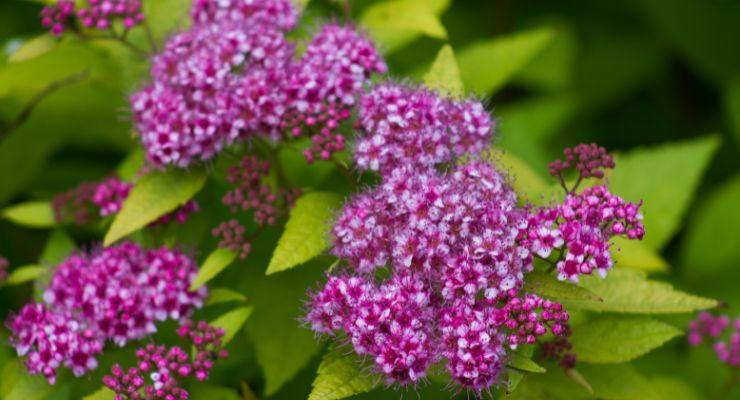
Conclusion
Shrubs with purple flowering are a great choice for those looking to add some color and vibrancy to their garden. Whether it’s the amazing Rose Of Sharon or the hardy Spiraea Japonica, there are plenty of options for these bushes with lilac flowers and manageable maintenance requirements.
With careful selection, you can find varieties that won’t become invasive while still providing your landscape with captivating beauty throughout every season.
Alternatively, see our selection of purple flowering trees or fast growing shade trees for your garden.
